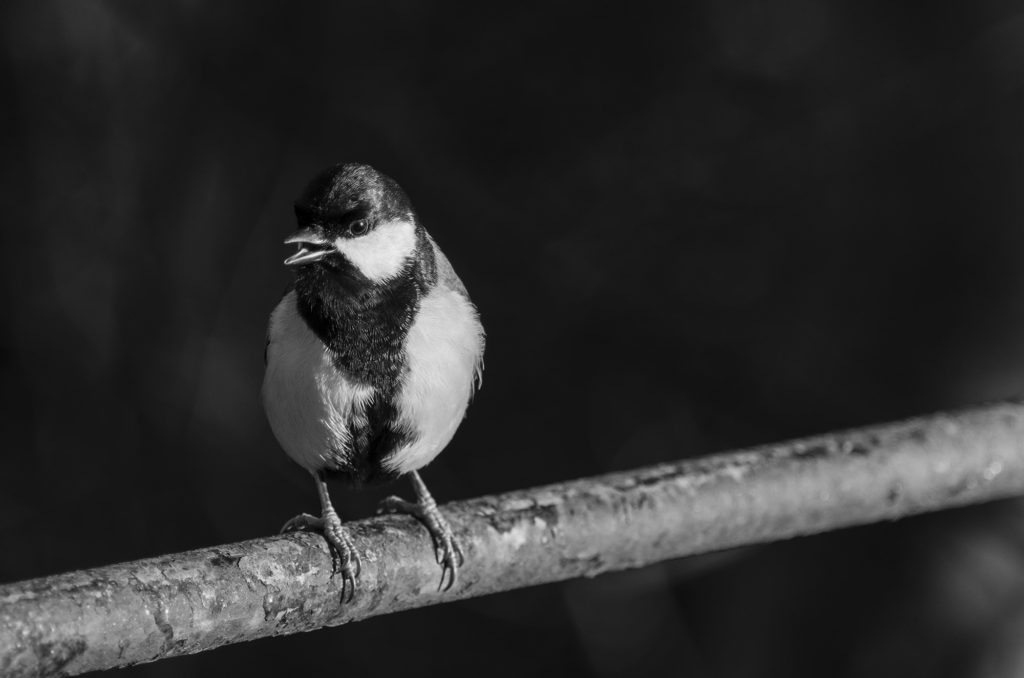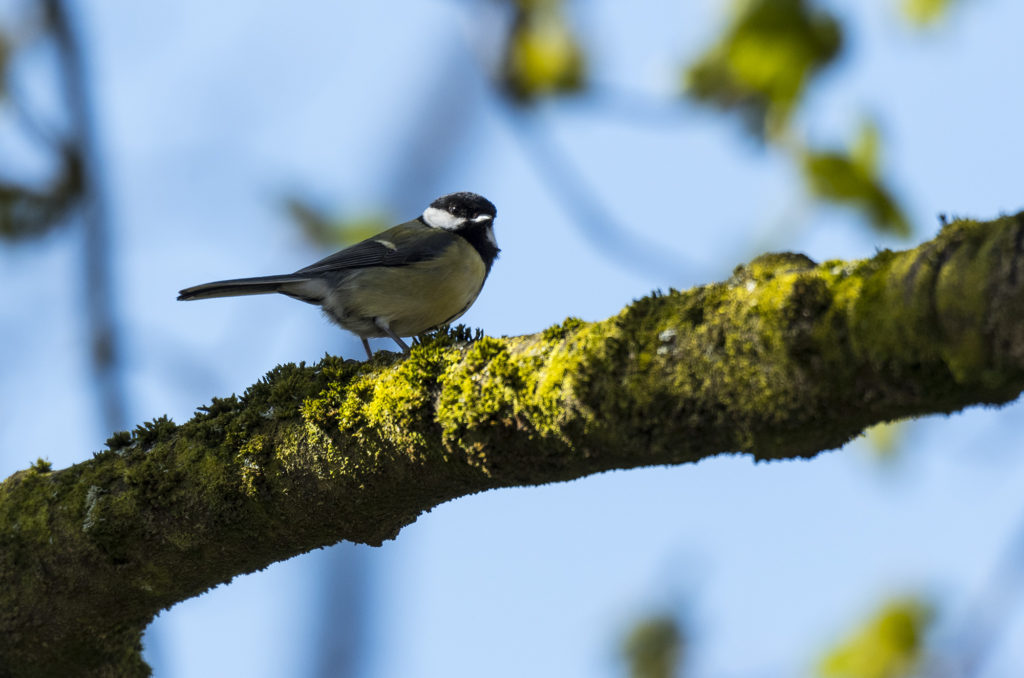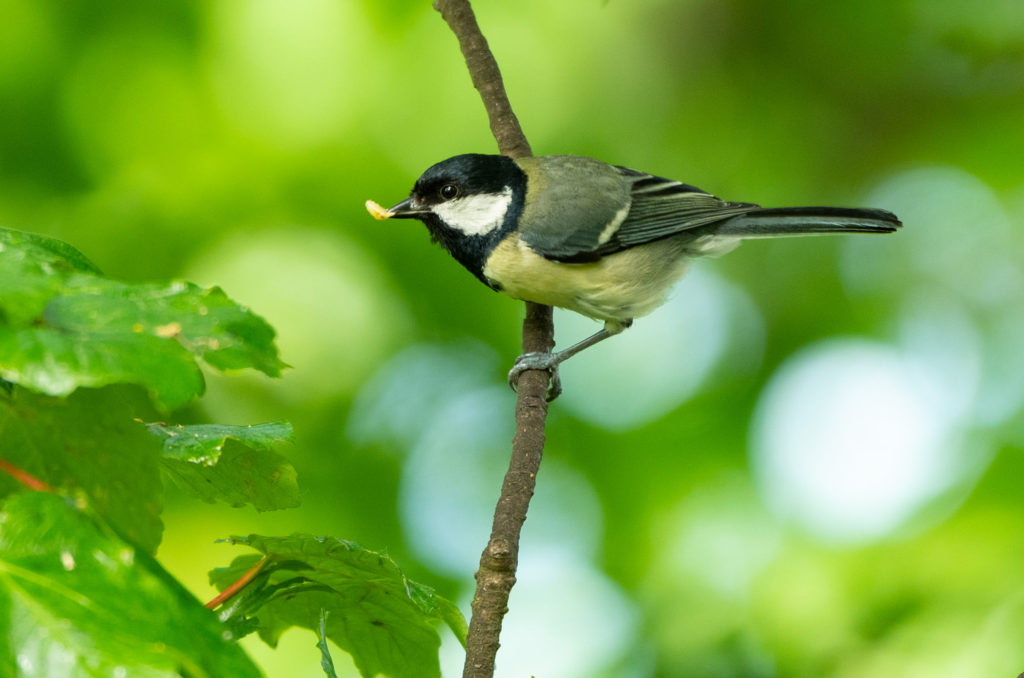One bird that I always hear long before I see is the great tit. Its high-pitched, two-syllable teacher teacher calls are loud and insistent, like a sugar-fuelled child using a squeaky bed for a trampoline. One bird is loud enough, but an area full of them is quite a sound. We were lucky to see – and hear – many of these birds in woodland near the M8 motorway in February. They even managed to drown out the noise from the traffic blasting past.
That said, they are not always easy to identify by their calls alone. With each male having an average repertoire of four songs that they can sing at three different tempos, it is easy to see how a single population of great tits can belt out up to 40 individual tunes throughout the year. For this reason, if you ask a birder about a call you are struggling to identify, they may tell you that a great tit is the most likely performer.
Bold equals breeding success
Great tit songs and calls influence successful breeding; a bird with a large lexicon is more likely to be dominant and therefore more attractive to potential mates.
But it’s not just a wide vocabulary that increases attractiveness; a wide stripe helps too. Allow me to explain. You can determine the sex of a great tit by the thickness of the black stripe running down its belly. Males have a broad stripe, that forms into an all-black patch in the centre of the tummy, whereas the female has a much thinner and often broken line. So, the great tit shown in the image below is clearly a male. The thicker the stripe on the male bird, the more attractive he is to the females because it is indicative of his status and how good a parent he will be.

Adapt to survive
I realise that I am making these bright birds sound a little dull and uncompromising when the great tit is actually one of our most adaptable birds, something researchers have long understood. On the 27th of April 1947, the University of Oxford’s ‘living laboratory’ counted the first great tit egg of the year at Wytham Woods in Oxfordshire. That egg began one of the world’s longest-running animal-tracking studies.
Now in its 75th year, the first great tit egg of 2022 was counted on the 28th of March, nearly a month earlier than that first egg back in 1947. This continuous study is helping researchers to deepen their understanding of how the timing of the laying of great tit eggs is influenced by climate change, the trees they live in, and their social interactions. That, in turn, should highlight potential issues for the future of this species – particularly in the context of the current climate crisis.

And that’s not all the ongoing study has found. It turns out that great tits can also adapt physically. In 2017, when Wytham’s great tits were compared with a population in the Netherlands, it was discovered that the UK’s great tits had evolved longer beaks. It is thought that these beaks allow them to efficiently feed from bird feeders, which are much more common in this country.
Frenzied feeders
As well as being a bit of a bruiser at the bird table (watch the reactions of the other birds when a great tit arrives), this species thrives on seeds in winter. Their diet includes the larger varieties, like beech mast and acorns, which they crack open with their beaks. During the breeding season their diet shifts to invertebrates, such as caterpillars. That said, they are opportunistic; one population in Hungary hunts and kills hibernating pipistrelle bats in the comfort of their cave – believe it or not.

So, the great tit may have a comedy name, but this is one seriously striking bird – in appearance, song and behaviour.

